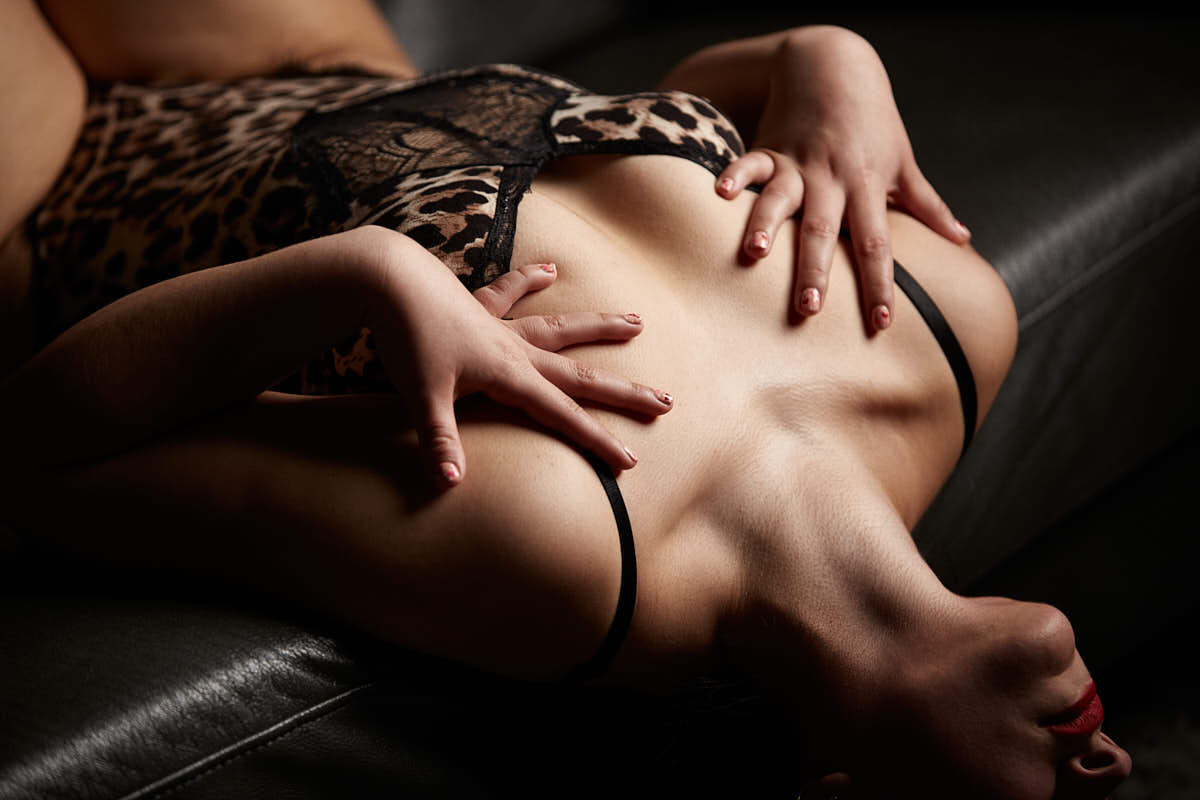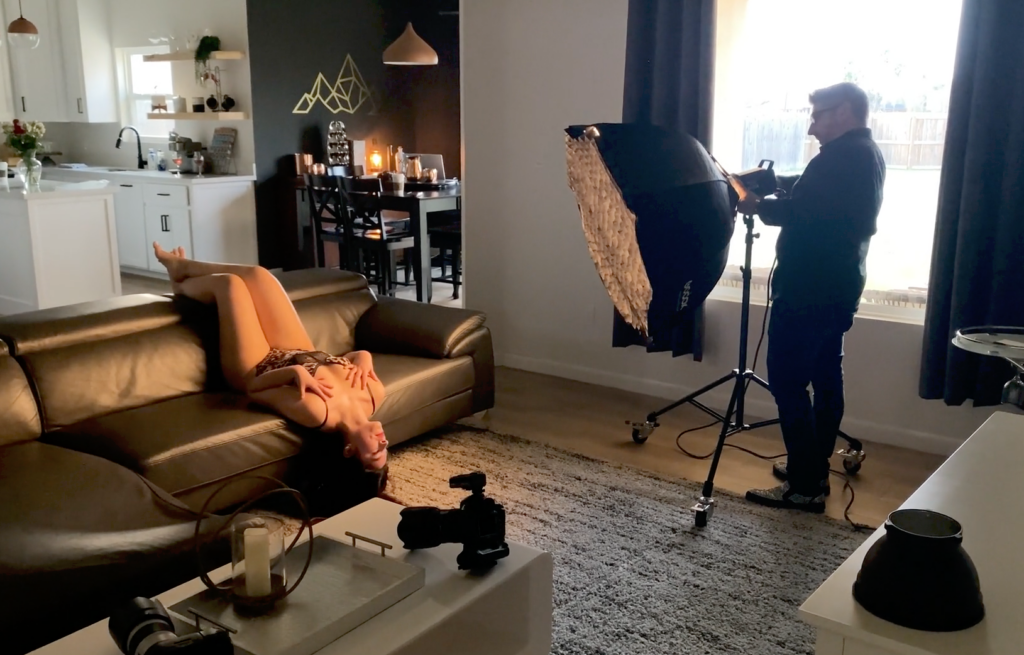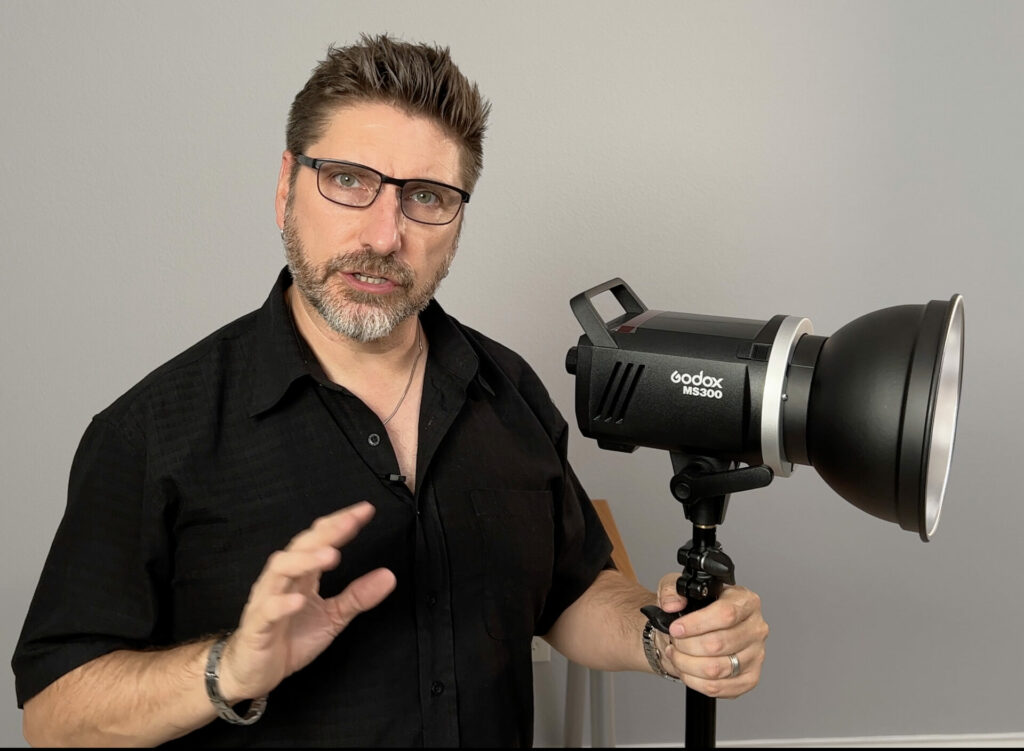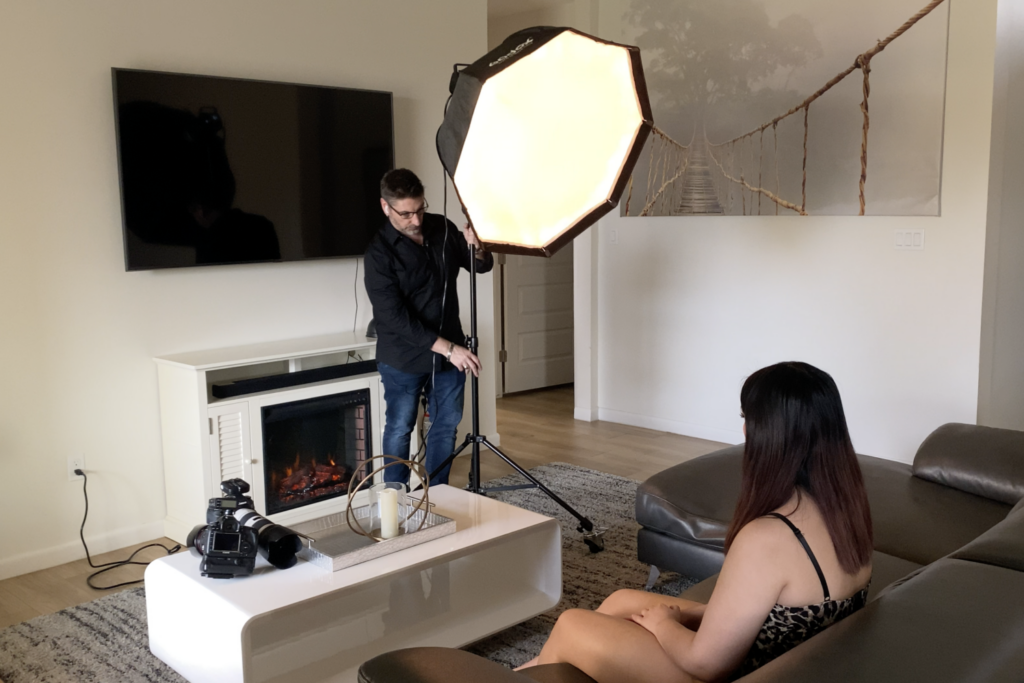Affiliate Disclosure
If you find the content valuable, using my links to make your purchases is great way to show appreciation!
Looking for the Best Boudoir Strobe Kit for 2025?
💥💥 Updated for 2025 💥💥
If you are new to strobe or considering using a strobe for boudoir for the first time, but you’re not sure what gear you need to get started this article is for you!
There are a lot of reasons for incorporating flash into your boudoir workflow. Here are a few of the most popular:
- A desire for more consistency than what you get from Mother Nature’s light source 🌞 🌥 🌤.
- Looking to be able to work any time of day, any time of year. 🕞 🗓
- Feeling the limitations of electronic continuous lighting and wanted to try something with more power ⚡️.
- Feeling like no matter what you do, you never seem to have enough light to create the images you want and as a result spend hours in post-production fixing 😕.
- Relocating your studio from a space that was filled with beautiful natural light, to one that has no windows such as a windowless basement. 🥷🏻
- Struggling with motion blur problems or images having more noise than you can tolerate without losing your mind. 🤪
- You want to begin experimenting with creative lighting to accomplish things that simply aren’t possible any other way! 🎨
Whatever the reason you’re here, YOU’RE HERE! So, Welcome, and Congratulations!
If you’ve never used a strobe before your photography is about to be changed forever.
Rich Cirminello
Great! But now what?
The market offers an overwhelming array of flash equipment from budget speed lights for under $50 through Profoto strobes costing over $1000 each! What’s a novice to do?
You may also be wondering:
How much power is enough? How much is too much? What is HSS? TTL? SMH and FML, this is TMI!
Do I need a lot of Watt-seconds, whatever those are!? What is a good Recycle time? Sync speed?
Do I need a soft box? How big? Can I use an umbrella instead?
What about a beauty dish?
What on Earth is a snoot? What’s a grid!? More importantly, how much do I need to spend?
Don’t worry… help is on the way!
What Strobe Should I Get For Boudoir?
It’s a simple question and one I am asked quite often.
My best answer that is most complete, and that I believe to be most helpful, is to say you need a little more than just a strobe. You need a kit.
The truth is, it takes a few extra pieces in order for your camera to communicate in sync with the strobe, and to tame that raw energy burst into something you can harness to create beautiful photos with.
The good part is that although there are a few key concepts you need to understand, I can almost guarantee you that it’s not nearly as complicated as you may have been led to believe.
⏩ Impatient? Click here to skip the article and fast-forward right to the recommendation!
Determining the Best Strobe for Boudoir
My primary goal in choosing equipment for this kit was for its user to be able to experience all the benefits of strobe without feeling overwhelmed by features and technology that interfere with masting the fundamentals. Simplicity was chosen over complexity.
I also wanted to recommend a complete kit which included everything you need to get started using it right away, but is also capable of producing professional results without needing to worry about making immediate additional purchases. Further, I wanted it to be suitable for creating a variety of looks so the user can really experiment with seeing what’s possible and begin to develop their own style.
Completeness and versatility was the goal, here.
Finally, it was important to me that what I recommend be worthy of being used by a professional. There is a lot of junk available on the market (I know, I own a lot of it!), but I wanted to recommend a kit that could be used to not only produce amazing results right now, but also continue to be useful well into in the future should your needs and your studio expand.
With all of that in mind, I came up with the following list of features, requirements, and criteria.
✅ A Good Modeling Light
A huge advantage strobes have over speed lights besides power output is the modeling light.
What is the modeling light? It is a continuous light that is integrated in the strobe, but is much lower intensity than the flash tube and is positioned to put light out in the same direction as the strobe. Its purpose is to give you a preview or ‘model’ of what the strobe will do when it flashes.

Why is it so special? This little feature takes all the guesswork out of positioning your light, allowing you to control highlight and shadow placement with precision.
This is obviously helpful in most types of photography, but in boudoir the combination of precision control and high intensity output is what makes dramatic dark and moody photos.
ISO 100, 1/160, f/2.8
The warm glow on her body and the couch in this behind the scenes pullback image is coming from the tungsten modeling light which I am using to precisely position the lighting.
The flash output, when it fires, is a lot more powerful and is daylight balanced.
Notice that the room we were working in has a fair amount of natural light coming in from outside in addition to the walls and ceiling (not visible) being white. No post-processing was needed to make the image dark and moody straight out of camera which should challenge the myth that you need to be in a dark room with dark walls in order to shoot dark and moody.

With the modeling light on, you can position the strobe and subject relative to one another to give you the perfect light without having to guess.
Unfortunately there is a trend of changing modeling lights over from tungsten to LED. I do not like LED modeling lights! I’ll explain why in another post.
✅ Light Weight
Many boudoir photographers work alone and in tight spaces, bedrooms, hotel rooms, etc… and moving the light should be easy. Something light weight, but sturdy was high on the list.
✅ Accepts Standard Modifiers
Another huge benefit strobes have over any other light source is the variety of modifiers that can be attached in order to shape and control the light. There are a few standard modifier mounts, the most popular being the S-Type also known as the Bowens mount after the Bowens company (now out of business, sadly) that created it. I favored strobes that have the Bowens mount.
✅ Versatile Power Range with Low Output
All this talk of flash output intensity might have you believing that more is better. Well, it almost always is better, however, boudoir is a little different. I was looking for strobes powerful enough to allow shoot with extremely low ISO and a variety of apertures, but the problem with most strobes available wasn’t that they are too weak, but that they are too strong for boudoir! I needed to find a strobe that would power down low enough for a boudoir photographer to use f/2.8 in a small space. Fortunately, I found a great unit that does.
✅ Advanced Wireless Remote System
I wanted a strobe that has the ability to have its output changed from a wireless controller. For the first 10 years I used strobes, such technology did not exist except for a few very expensive options. Fortunately today most manufacturers make wireless controllers that allow you to also change the output and adjust other settings.
What Was Consciously Left Off the List of Requirements?
While determining what to include in my kit, there were certain features I decided to do without. One was left off to keep weight and costs low, the others to maintain as simple a unit as possible, so as not to interfere with learning the fundamentals. As I said elsewhere, if you enjoy using strobes even 10% as much as I do, you’ll buy more. And when you do, feel free to include some or all of these features, as your needs dictate.
🚫 Battery Power
Battery power is a great option for strobes and something that many of today’s photographers take for granted. Having an integrated battery removes the need for a power cable, but adds a bit of weight to the light unit as well as significantly increases the price. To keep the cost of entering the world of strobe relatively low, the one I will be recommending here does not have an integrated battery and must be plugged into the wall.
Having said that if battery is a necessity and don’t mind spending more than 4x as much, look out for my post about the best battery powered strobes.
🚫 TTL
Through The Lens (TTL) is technology where the camera uses it’s built-in meter to communicate with the flash to set the power output automatically.
Where I find this technology most useful includes weddings, concerts, other types of events, and certain types of portraiture where the photographer is attempting to blend flash with environmental lighting conditions that are beyond his/her control and change dramatically.
Such conditions are not typical in a controlled indoor space such as a photography studio or on locations with more consistent environmental lighting such as a hotel or Airbnb. In these situations situations relying on TTL to control your flash output can be problematic as the camera meter readings of the ambient lighting will vary slightly from shot to shot and therefore so will the exposure, resulting in inconsistencies in your session. I always find it better to manually set the power output of the strobe and know that it will remain consistent until I change it myself.
All this to say, I did not consider TTL to be a required feature of our boudoir strobe.
🚫 HSS
High Speed Sync (HSS) gets a lot of attention especially in discussions online.
HSS allows you to synchronize your flash using a faster shutter speed than your camera’s sync speed. If you’re new to using flash, what I just said probably doesn’t make any sense to you, but that’s ok! You don’t need to understand it all right now, and it’s not something you’re going to need right away, if ever. Besides, if later you want to learn more about it, look out for my article explaining sync speed.
The bottom line on HSS is that while it’s definitely useful in certain situations I’ve been fine photographing boudoir for over 15 years without needing it, so for the sake of simplicity, I intentionally left it off the list or requirements of a starter strobe.
The Recommendation
Drum roll, please! 🥁
My recommendation is for a four-piece kit including a strobe, wireless controller, 37″ octagon soft box, and light stand.
The Strobe: Godox MS300 or MS300v
At the center of the kit is the Godox MS300 strobe.
The MS300 has the perfect balance of value and features that makes it both extremely powerful and yet still simple to use.
The power output is rated at 300w/s usable over a 5-stop range, and this is where this little powerhouse surprised and delighted me – most other strobes like the MK300II which I also considered, only offer only 4-stop range.
This extra stop in the MS300’s range may not seem like a big deal, but it is the ultimate reason I chose this strobe over several others with similar features and pricing. This range makes it power low enough for the boudoir photographer who wants to shoot with an open aperture like f/2.8, yet powerful enough for a headshot at f/8.
MS300 or MS300v – what’s the difference?
The main difference between the MS300 and the MS300v is the modeling light.
The MS300 includes a tungsten modeling light and the MS300v is a newer version and includes an LED modeling light.
The LED modeling light on the MS300v is convenient because it does not get hot, and does not protrude beyond the flash, making it safe from being accidentally broken.
The downside to the LED modeling light is that it cannot be replaced if it dies, and the preview of shadow and hardness/softness that a flat LED gives is not as accurate as the tungsten light. Beyond that, the MS300 and the MS300v are pretty much the same. I own and have used both.
Personally, I prefer the MS300 with the tungsten modeling bulb, however, I have included the MS300v because it is my understanding that the MS300 may eventually become phased out and replaced by the MS300v. Some retailers are no longer carrying the MS300, though as of this update for 2025, Amazon still is.
Visit my YouTube channel to watch a video where I review the MS300V and compare it to the MS300.
Additional things I like about the MS300 for Boudoir include:
- Incredible 5-Stop range 1/1-1/32 in 50 steps
- Modeling light modes: off, full, proportional
- Compatible with cost-effective Godox wireless controllers like the X2T-x*
- Compact and light weight 1.3kg
- Accepts Bowens modifiers
- Clear Display Screen
- Recycle Beep
- Standard mini jack sync port for use for triggering with a wire (not needed if using wireless control, but good to have as a backup method)

At the time of this writing there is one seller on Amazon including a standard 7″ umbrella reflector included with the MS300.
The same seller is offering a to include a 7″ reflector with the MS300v as well.
The Godox AD-R6 reflector would cost you more money if purchased separately.
If you are going to take my advice and order yourself the MS300 there are a couple of additional things you need.
The Wireless Controller: Godox X2T
If you already have a Godox wireless controller you’re good to go! But if you don’t, I recommend the X2T.
There are several model variations and you must buy the model that matches with your camera brand.
Here is a handy chart to help you find the one for you:
The Octagon Soft Box: Godox SB-UE 37″
I honestly can’t tell you how many strobe lighting modifiers I own and since our last move many are in strorage, so I couldn’t even count for the sake of this article. However, it is probably safe (and pretty close to accurate) to assume I have ALL OF THEM. From 72″ soft boxes to snoots to honeycomb grids and beauty dishes, I have tried them all and have almost everything in multiple sizes. I have matching pairs of 84″ umbrellas, 30×50″ soft boxes and 16×72″ large strip boxes, but the modifier I most often use for boudoir is a simple octagon softbox around 3′ in diameter with and without a grid.
The exact one I use so often happened to be a 36″ made by Impact brand, but was quite expensive (softbox, speed ring and grid all purchased seperately cost nearly $400 in total) so I sought to find a less expensive alternative. I didn’t want to just recommend a ‘cheap’ one – I needed to make sure it was something I would actually use.
Fortunately, Godox makes the SB-UE octa which comes in a 37“ version and includes the speed ring integrated (a speed ring is what attaches the modifier to the strobe). Making it even more of a great value, a grid is also included! In addition, this octagon softbox collapses and sets up in a similar way to closing or opening an umbrella which saves you a ton of time when using it. Putting it together for the first time was a bit of an extra pain, but you only need to do that once, then you’re good to go!
To try it out for myself, I ordered one for myself and after using it for a few months with the MS300, I ordered a second one for my wife to use.
If I’m being honest, the build of the SB-UE is not as solid as my 36″ Impact, however I still believe the Godox is high quality and have been using mine almost 1 year and still works like new. I have no qualms about recommending it as your first real modifier.
The Light Stand: Westcott Air Cushioned 8 Foot (2.44m) Heavy-Duty Light Stand
⚠️ Believe it or not, one of the hardest pieces of photo equipment to buy online is a decent light stand! It’s not easy to tell the difference between the flimsy lightweight ones and the heavy duty ones as they all look alike and have similar descriptions. I have updated this blog post 3x with new light stand recommendations due to my previous recommendations becoming unavailable, so if the links here do not work, please check my Influencer Page for alternatives.
The final piece of kit you will need is probably the most boring and mundane, but you will need a sturdy light stand. Here there is tremendous variety, but I recommend erring on the side of sturdiness, because a strobe falling over has the potential to break the flash tube or, more likely, the modeling bulb, and cleaning up broken glass when you’re supposed to be creating beautiful boudoir photos is no fun. I’m not saying I’m speaking from experience, but… I’m speaking from experience!
Here I recommend the Westcott Air Cushioned 8 Foot (2.44m) Heavy-Duty Light Stand. If you have something heavier that should be fine, but I really wouldn’t go with anything lighter or flimsy.
Once again, in the photos here you can see the entire kit in action. I shoot Canon so I am using the X2T-c controller on my 5DIII.

Conclusion:
So there you have it: a solid starter kit that includes everything a boudoir photographer needs to begin incorporating strobe into their studio right away.
A Special Offer to Learn More
For those boudoir photographers who want to accelerate their learning and benefit from having an experienced lighting coach and mentor answer questions, provide feedback, and guide them through, I created the One Light Boudoir Program. Through a combination of guided lessons, live coaching, and assignments, One Light Boudoir (OLB) is designed to give you everything you need to do it right and do it now. I even give you the lighting equipment.
Get The Best Strobe Kit for Boudoir described in this article for FREE and get 10% off enrollment in the One Light Boudoir Course with this Link
Students who register for One Light Boudoir will have the strobe kit described in this blog sent to them as a bonus when they pay in full for their enrollment!
Find out more about One Light Boudoir by visiting the site here.
You can enroll today – within a few days you’ll have your equipment and you can begin learning! How cool is that?
Everything recommended in this article (and more!) is available from Amazon.
See more recommendations from Rich Cirminello
The Complete Educational Offerings from Rich Cirminello Education
